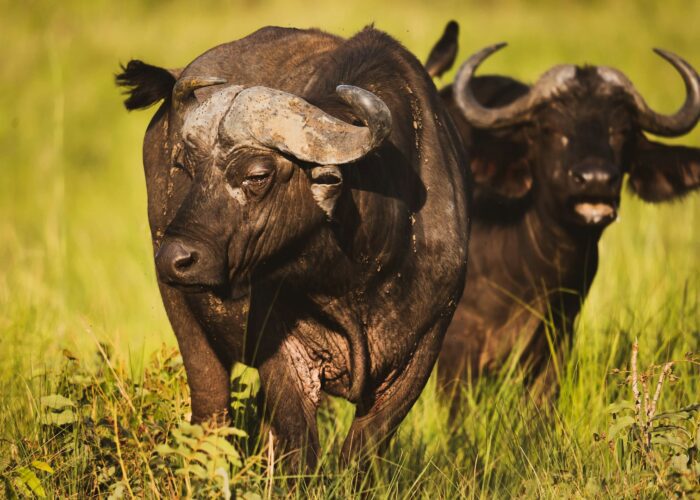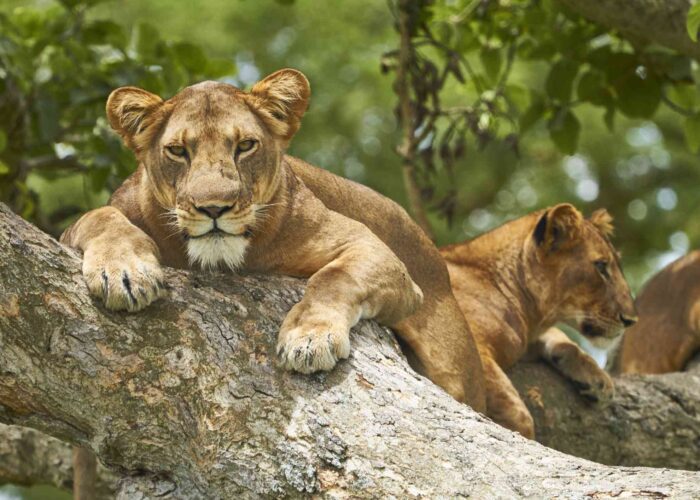Queen Elizabeth National Park: The Experience
The golden grasslands and pristine landscapes of Queen Elizabeth National Park connect several regions and two lakes (George and Edward), with the scenic Kazinga channel, which runs through it. Whether explored on a leisurely river cruise or in a safari vehicle, the park now boasts four of the Big Five, with steadily increasing populations of lion, elephant and leopard, as well as great herds of buffalo. This is also one of the few places in the world known for tree-climbing lion, similar to those found in Lake Manyara National Park across the border in Tanzania. The southern part of the park is volcanic and is pocked with crater lakes that are rich in minerals.
Elephant and buffalo are very common, and lion are surprisingly easy to spot. There are many interesting antelope species, such as Uganda kob, topi and bushbuck. Hippo and crocodile are common in Kazinga Channel. A troop of chimpanzee has been habituated for tracking and nine other primate species are found, including the black-and-white colobus monkey. Giraffe and zebra are absent.
Queen Elizabeth National Park: Birdlife
Queen Elizabeth National Park has the largest checklist of any protected area in East Africa with more than 600 bird species recorded. This is mostly due to the wide variety of habitats: from savannah to forest to wetland. Many of the birds in the park are regarded as specials within East Africa, which make it a prime birding destination. The swamps in the Ishasha sector are a good place to look for the elusive shoebill stork. Migratory birds are present from November to April.
The birdlife in Queen Elizabeth NP is good year-round, but at its best from late May to September, when the rain is less and food is abundant. June to July has the least rain, while April to May and September to November have the most rain. The heavy rains might result in delays due to impassable roads and slippery hiking trails. These may limit your bird-watching time. From November to April, migratory birds can be found in the park.



